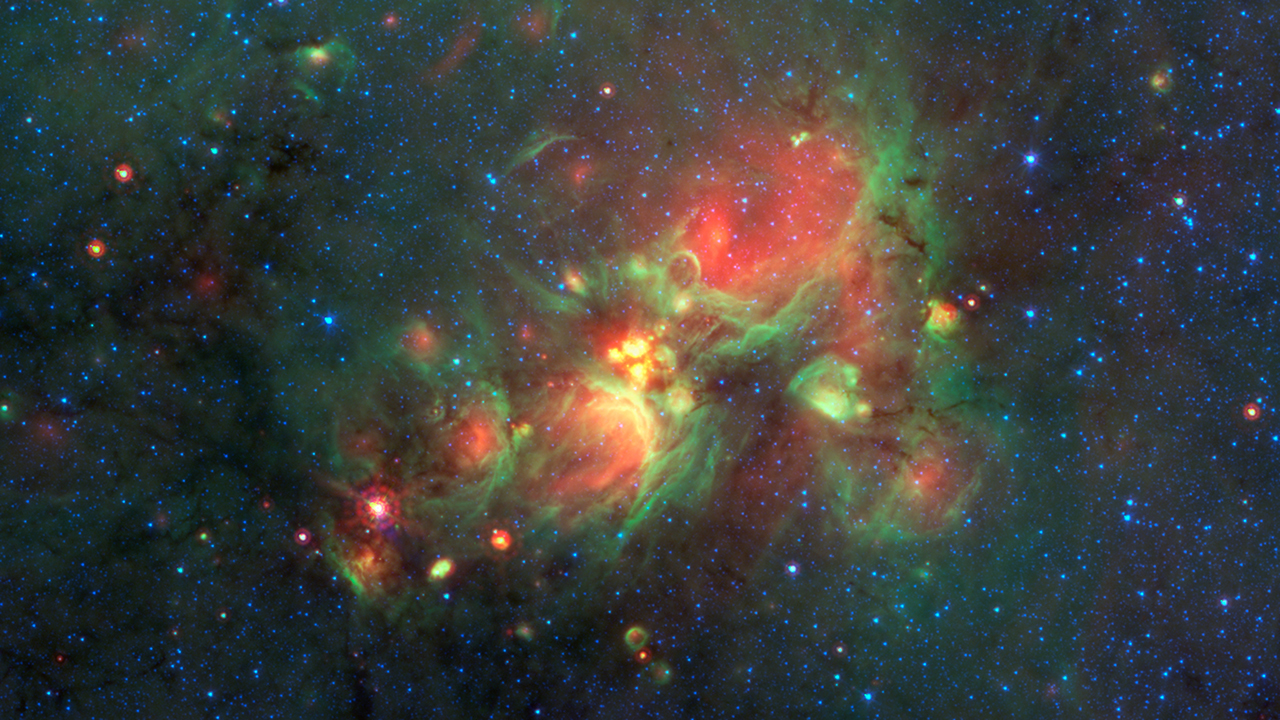Business Insider reports that amateur astronomers digging through thousands of web-based Milky Way Project noticed yellow clusters in some images taken from NASA’s Spitzer Space Telescope. Astronomers believe that the yellow balls are an early part of the evolution of massive star formations.
“The yellow balls are a missing link between the very young embryonic stars buried in dark filaments and newborn stars blowing the bubbles,” says Adler Planetarium astronomer Grace Wolf-Chase. “With prompting by the volunteers, we analyzed the yellow balls and figured out that they are a new way to detect the early stages of massive star formation.” Wolf-Chase and Iowa State University professor Charles Kerton published a study on their findings in the Astrophysics Journal.
The balls appear yellow in color because of Spitzer’s infrared imaging, explains NASA:
In the Milky Way Project, volunteers scan through images that Spitzer took of the thick plane of our galaxy, where newborn stars are igniting in swaths of dust. The infrared wavelengths detected by Spitzer have been assigned visible colors we can see with our eyes. In addition to the yellow balls, there are many green bubbles with red centers, populating a landscape of swirling gas and dust. These bubbles are the result of massive newborn stars blowing out cavities in their surroundings. The green bubble rims are made largely of organic molecules called polycyclic aromatic hydrocarbons (PAHs), cleared away by blasts of radiation and winds from the central star. Dust warmed by the star appears red in the center of the bubbles.
In infrared imaging, yellow signifies an area where green and red overlap. While volunteers have classified 5,000 green bubbles, the yellow balls are a new discovery.
Though they seem tiny, they are “actually several hundred to thousands of times the size of our solar system,” according to NASA.
(Photo: NASA/JPL-Caltech)



